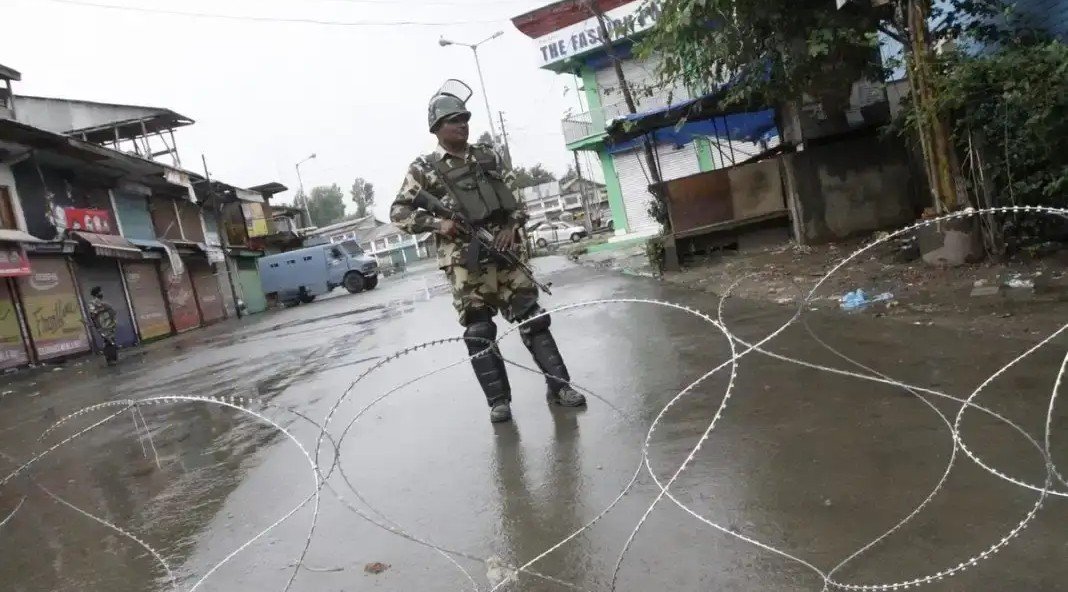Srinagar: Jammu is witnessing a spike in militant activities, with a two-fold increase in the arrest of ‘overground workers’ (OGWs) and killing of militants last year. Officials in the J&K security establishment attributed this to renewed attempts to put Jammu back on the militancy grid, and greater offensive on the Line of Control after the scrapping of Article 370.
According to police data with ThePrint, the Jammu and Kashmir police arrested 25 individuals accused of serving as OGWs to various militant outfits, in 2020. This was over double the figure each year between 2015 and 2019, when not more than a dozen OGWs were arrested across Jammu.
Sources in the security establishment said the arrest of confirmed OGWs establishes the reach and spread of militant outfits.
The OGWs provide militants logistical support within the erstwhile state and also act as couriers of arms and messages. They are also tasked to establish bases, which not only aid militants to mark their presence in multiple locations but also serve as transit areas for incoming infiltrators or Pakistani militants, said the sources.
In 2020, these militants activated some of the older routes used for infiltration into Jammu, multiple security officials told ThePrint.
Moreover, a total of 13 encounters took place in Jammu last year, killing 18 militants, including foreigners. In 2015, this number was at 20, after which it dropped to 13,7,16, and nine in the following years until 2019, respectively.
In 2015, 13 people were killed in militancy-related incidents — a metric that shows the state of law and order in a region. This number stood at eight, nine, 13 and eight, respectively, between 2016 and 2019. Last year, 13 people were killed in militancy-related violence.
Data also revealed eight militants were arrested by the police in 2020, two of whom were booked under the Public Safety Act last year. One OGW was also booked under the law in 2020.
The Jammu numbers might seem small compared to gun battles that raged in Kashmir division, killing 203 militants in 2020, but data from previous years has prompted authorities to make security a priority in 2021 as the establishment anticipates more attempts by militant outfits to mark their presence in Jammu.
“We have been able to neutralise the threats in 2020 successfully but this year comes with its own challenges such as infiltration attempts and efforts to foment the law and order situation in Jammu division. We are prepared for all eventualities,” said Mukesh Singh, Inspector General, Jammu.
These developments come even as the annual report of the Ministry of Home Affairs (MHA) revealed that militancy in Jammu and Kashmir witnessed a drop of 63 per cent in 2020.
Why increased activity in Jammu?
According to security officials, two factors contributed to the spike in militancy movement in the region — Pakistan’s interest in making Jammu a disputed territory and the inability of militant outfits to make bases there.
“One is militant outfits do not want Jammu to fall from the militancy grid thus making the insurgency specific to Kashmir only. Internationally, Pakistan makes Jammu and Kashmir as a case of disputed territory, not Kashmir alone,” said a source.
“After the turbulent 90s, there were multiple attempts, especially in 2000, mid-2000s and then post-2012, to increase militancy in Jammu but outfits have failed at establishing bases in the division. Of course Jaish-e-Mohammad (JEM) was able to carry fidayeen assaults in Udhampur, Gurdaspur and Pathankot but they could not establish proper bases in the division unlike Kashmir,” said a source.
A second source said the communication blackout enforced ahead of abrogation of Article 370 and increased offensive at the LoC in Kashmir is also among reasons behind this “shift towards Jammu”.
Dr Ellora Puri, who teaches political science at the Jammu University, attributed geography as the prime reason for increased militant activity.
“The number of incidents suggest there is not a pattern. It seems sporadic. However if the security forces are observing an increase in militancy it is probably due to a couple of factors. The terrain from Pakistan-occupied Kashmir to Jammu is not as difficult as Kashmir and the weather conditions are favourable too,” said Puri.
“Similarly in the early 2000s, the number of foreign militants in Jammu was extremely high and the primary reason was geography. It was easier to infiltrate into Jammu,” he added.
Old routes back in business
In January 2020, three Jaish militants were killed and three OGWs were arrested after an encounter at a toll plaza on Jammu-Srinagar highway. The militants were believed to have been freshly infiltrated from Pakistan.
A police source claimed OWGs had been able to transport militants from the same route on more than 30 occasions.
“We have noticed infiltrators using some older routes that were used by militants and remained dormant for quite some time. This is because the Indian Army was on an offensive along the LoC in Kashmir as a reaction to repeated infiltration attempts,” said the police source.
“The communication blackout further forced foreign militants to take older routes through International Border. Routes running through LoC into Rajouri area have also been revived along with older routes,” added the source.
A senior security officer in J&K said increased vigil on the LoC as well as the International Border by the Army and the paramilitary forces had curtailed infiltration significantly. The officer said there were 130 attempts of infiltration from the LoC in 2019 as compared to around 50 in 2020.
“Of course it also means that infiltration may increase but Pakistan is facing shortage of manpower as well as funds to sustain insurgency in J&K,” the officer said. (The Print)
